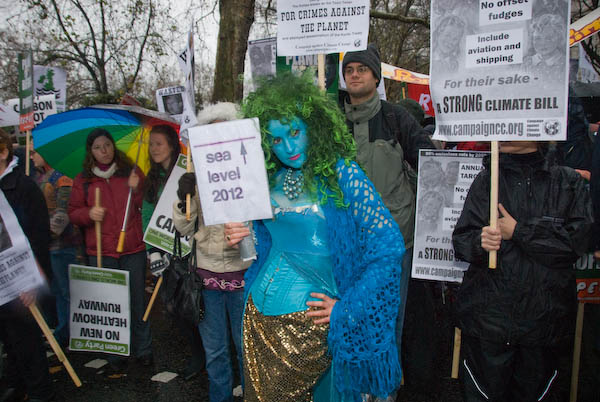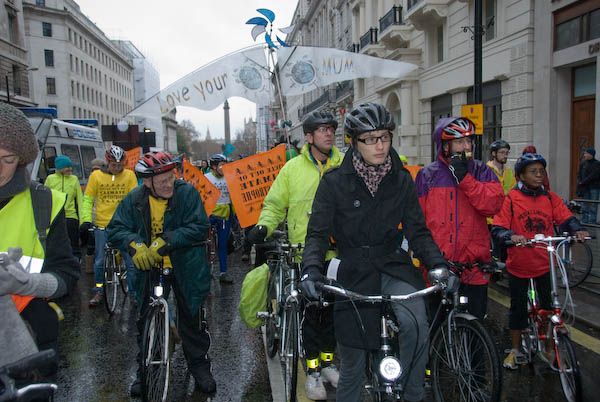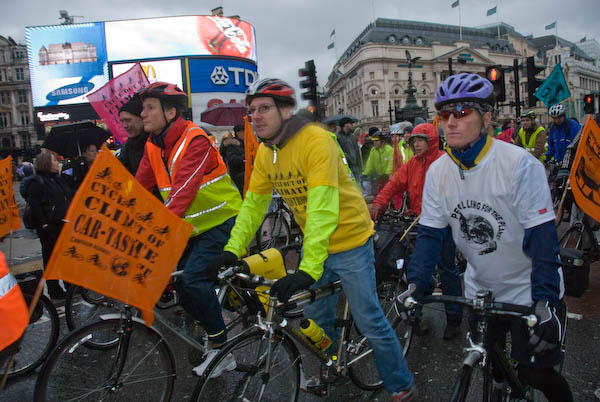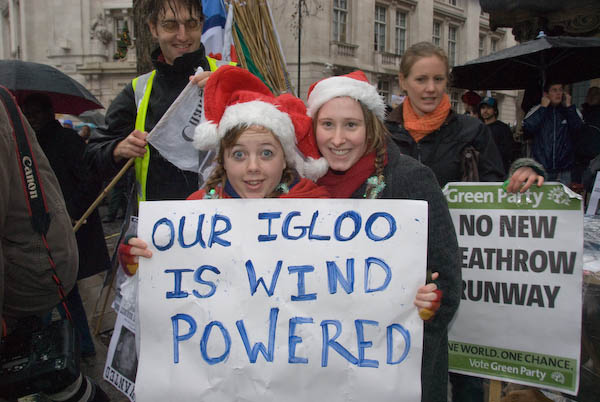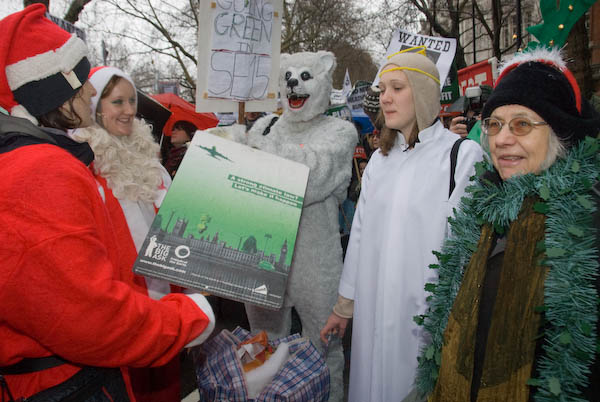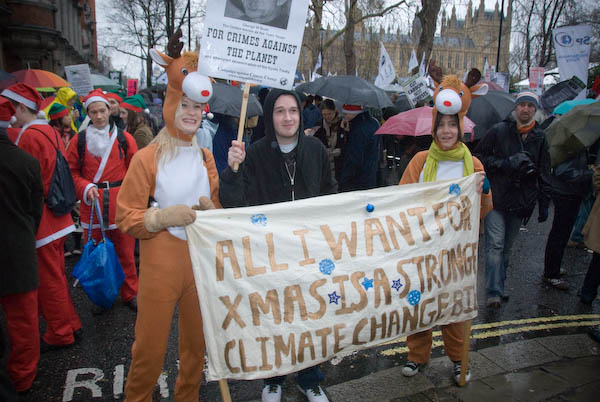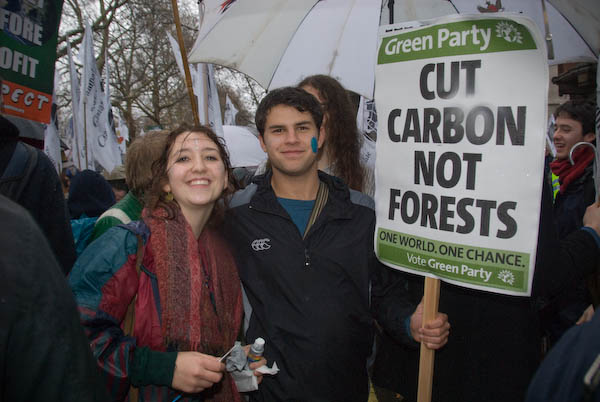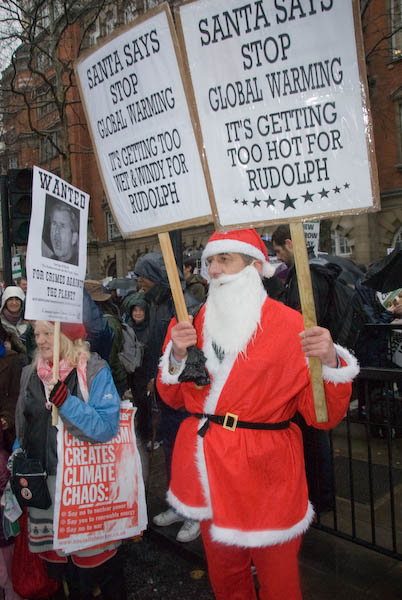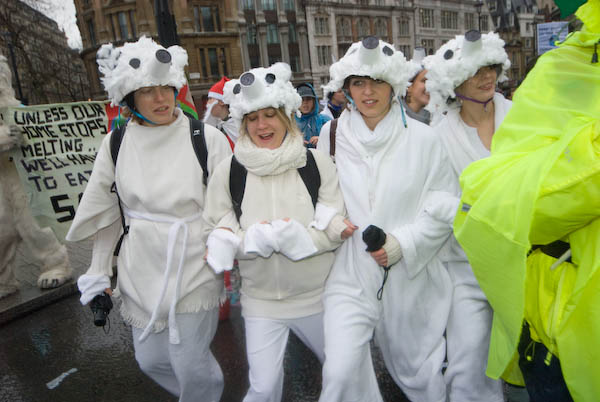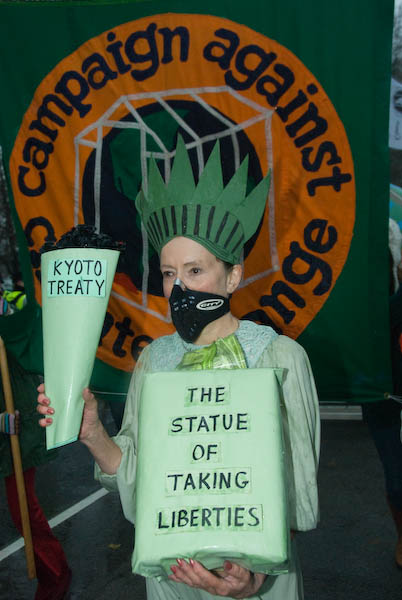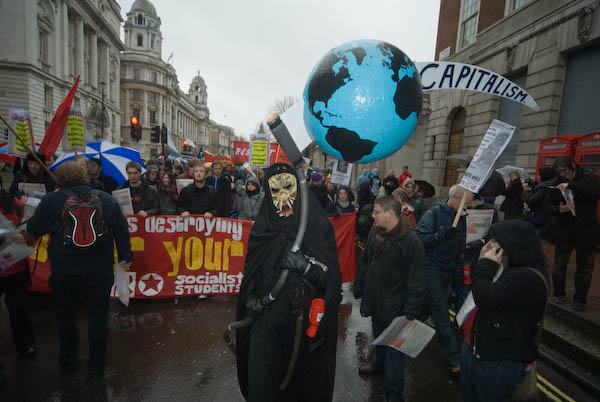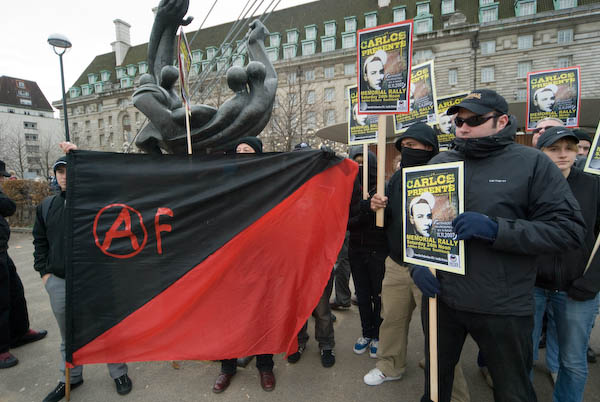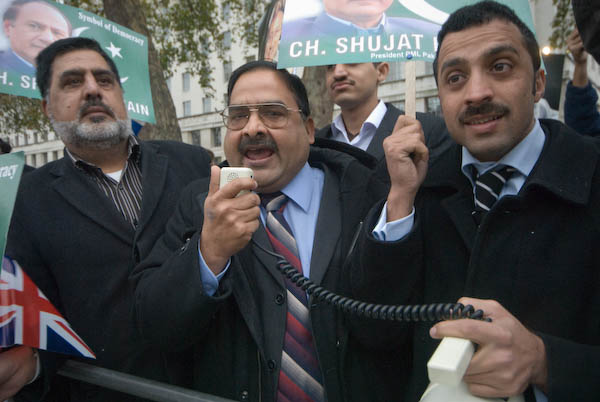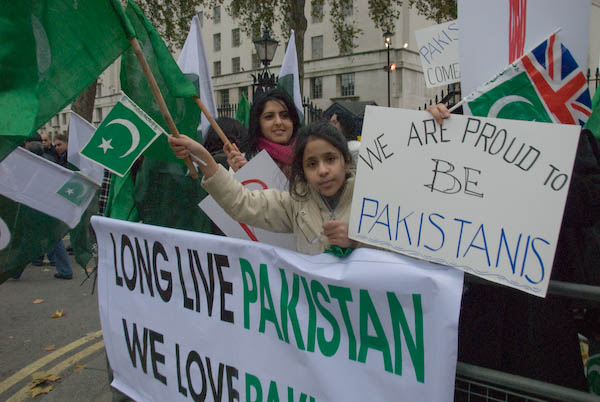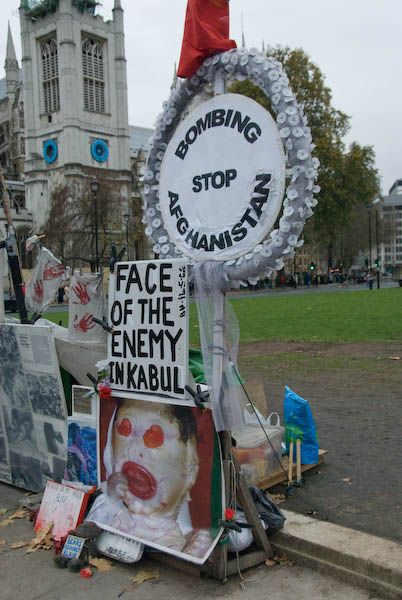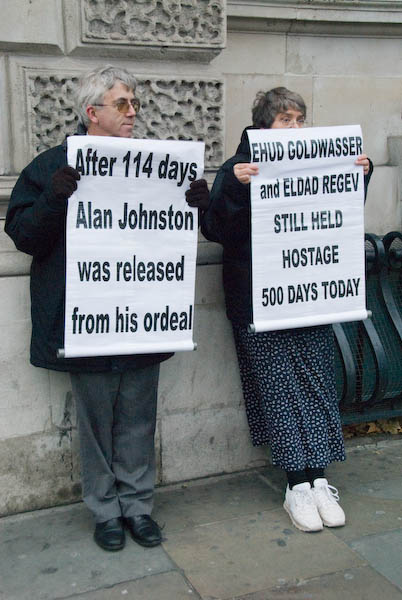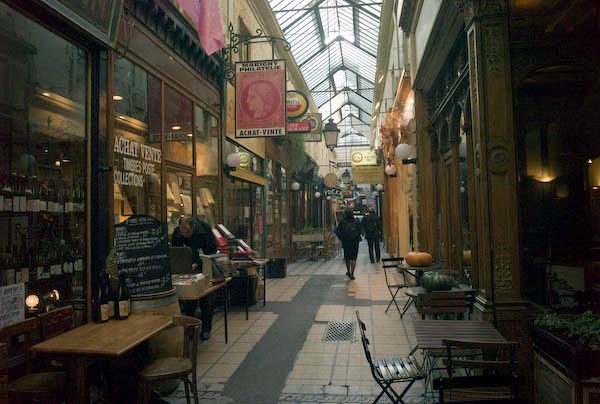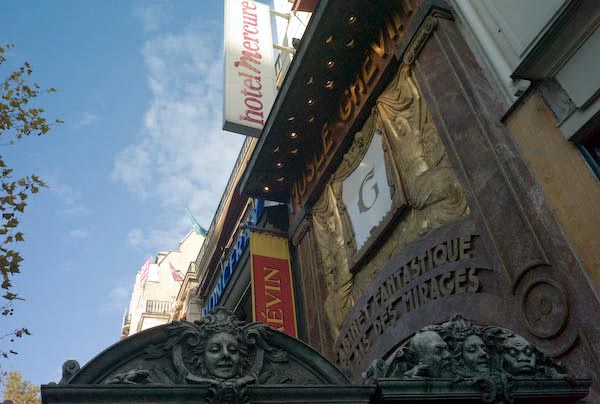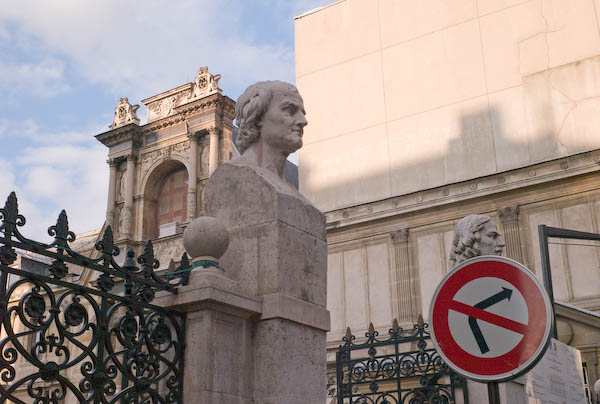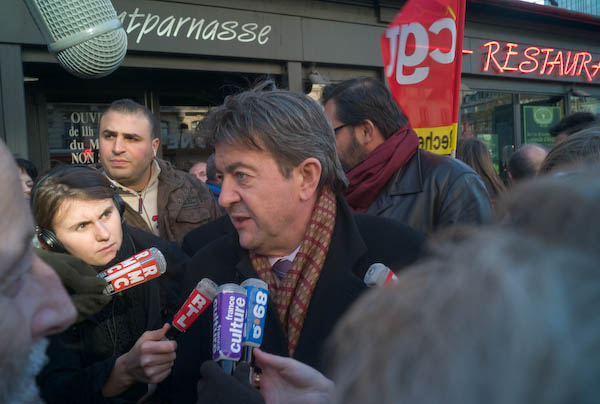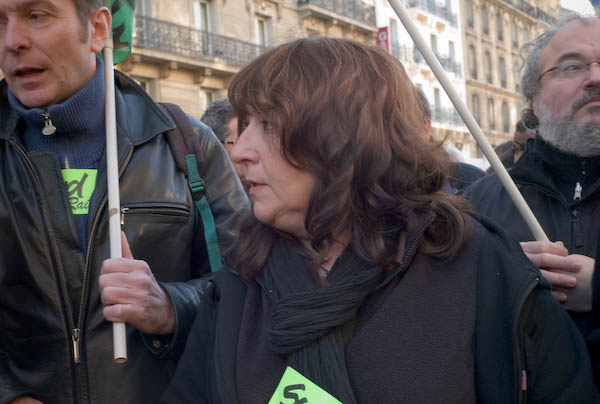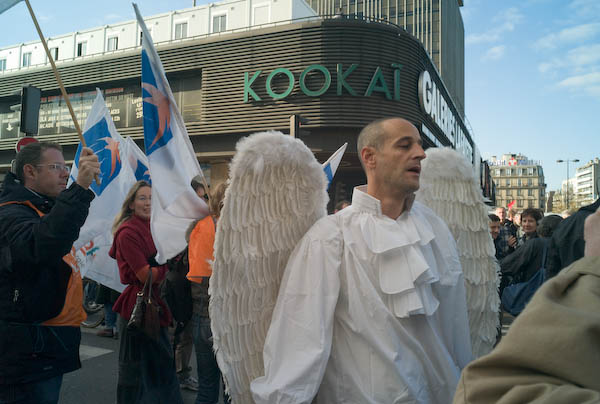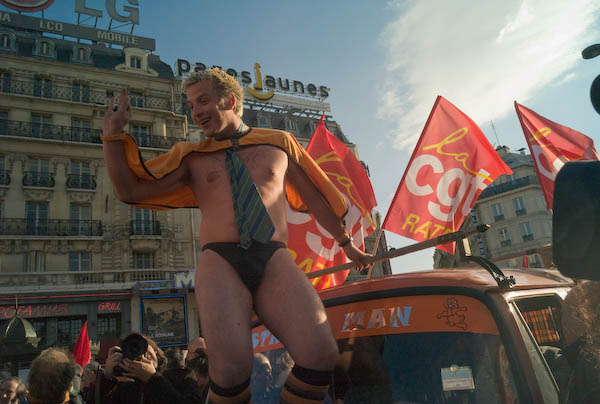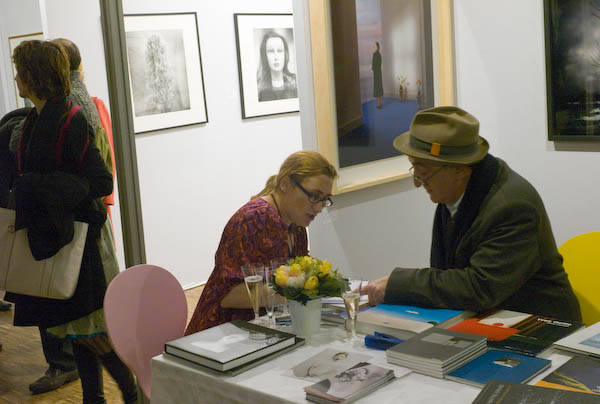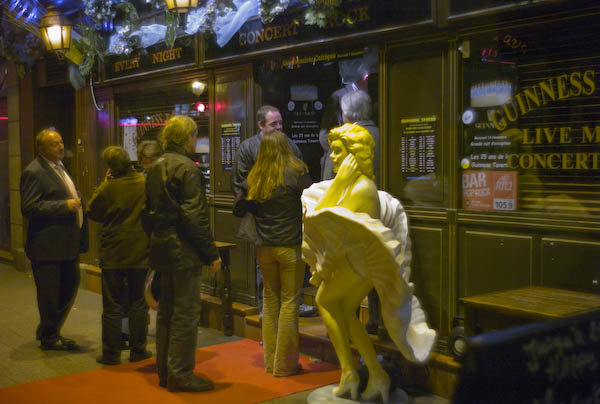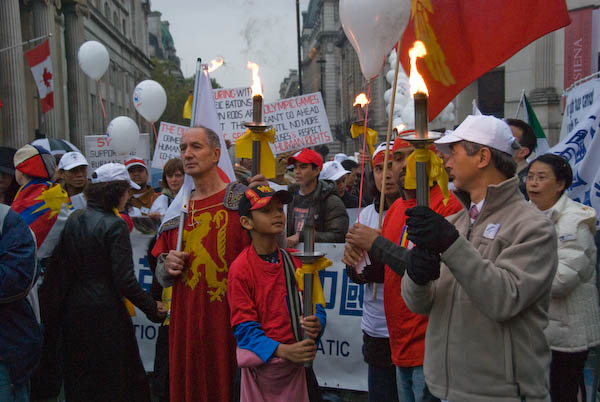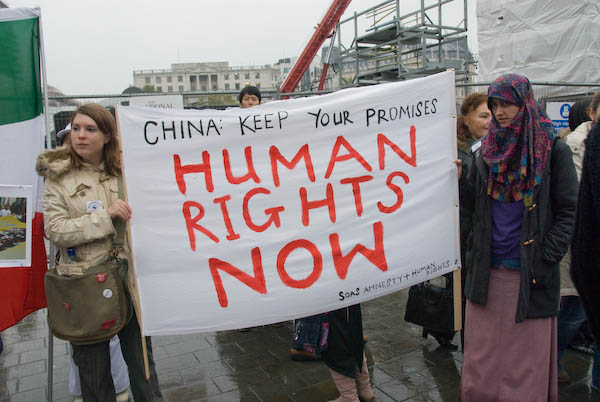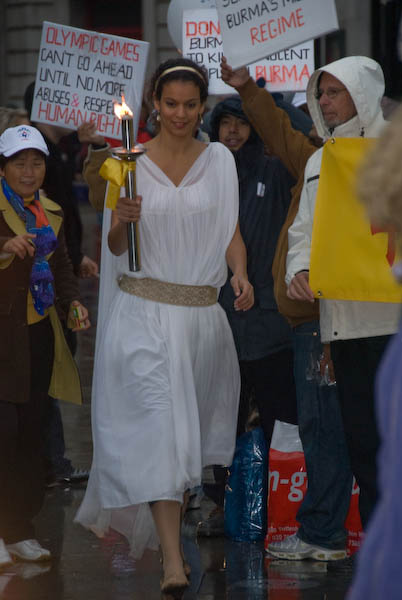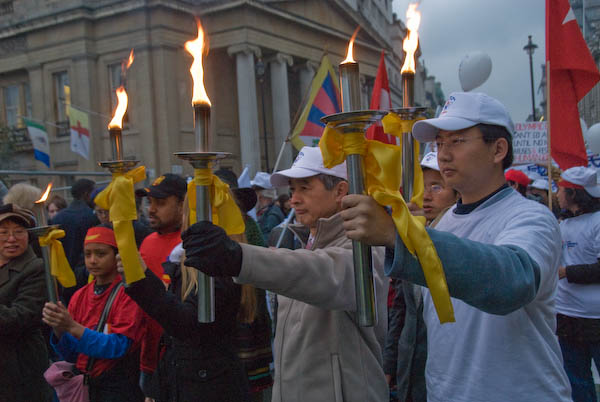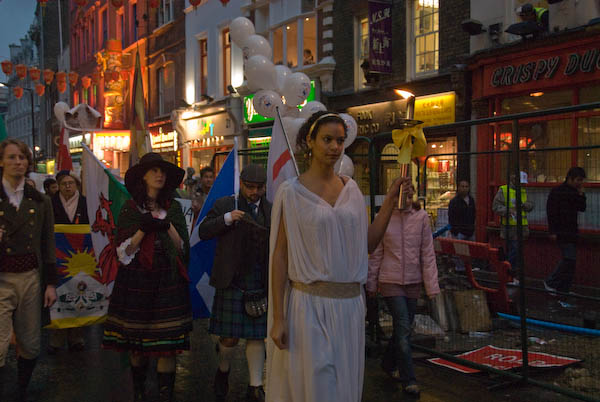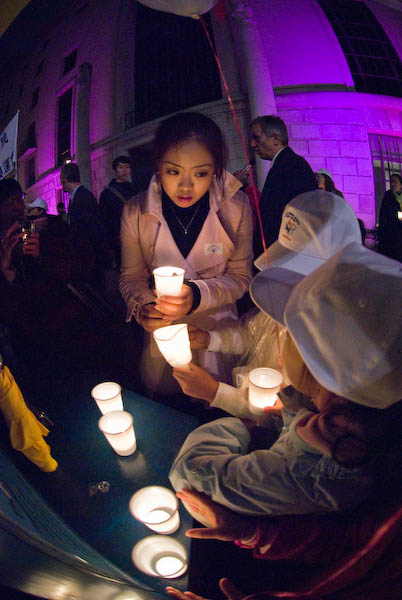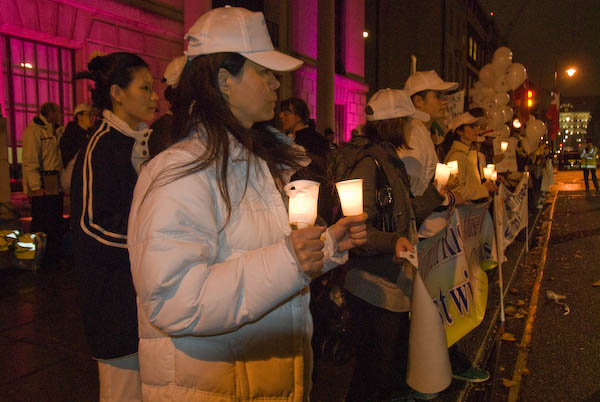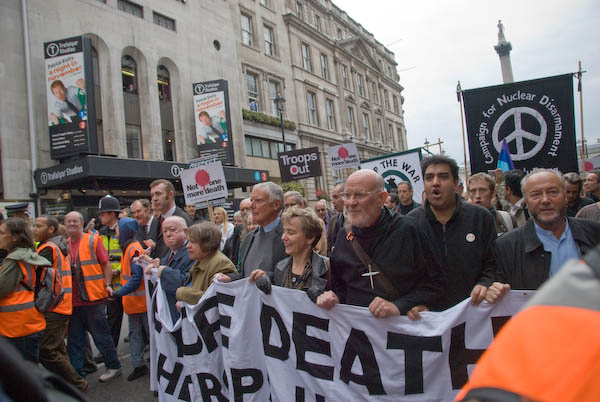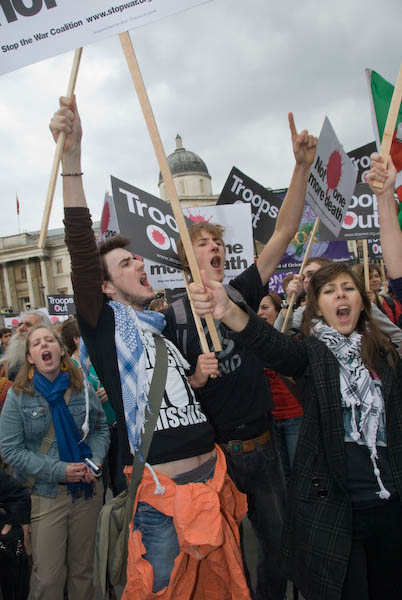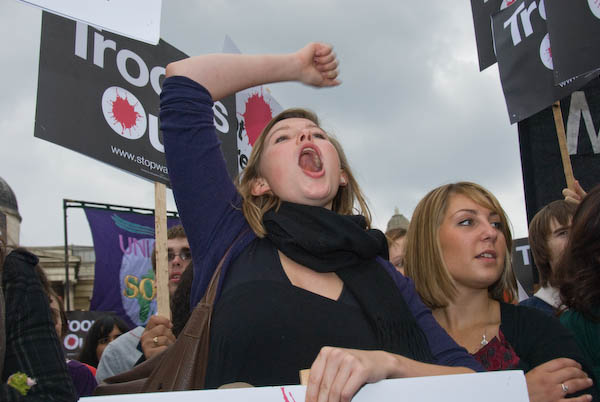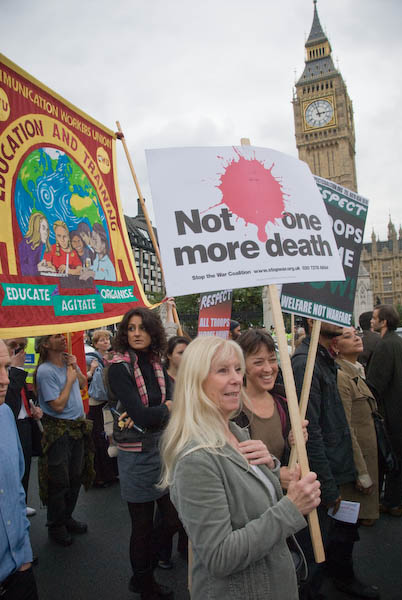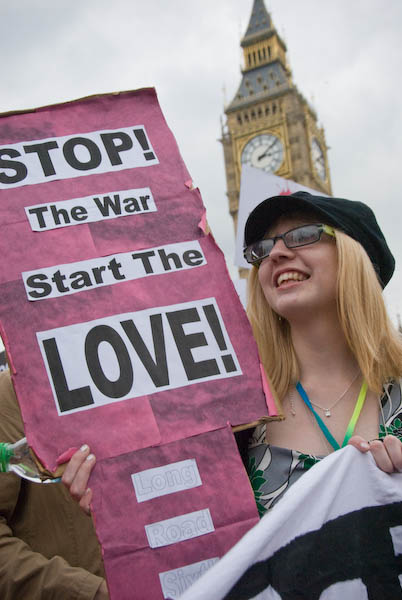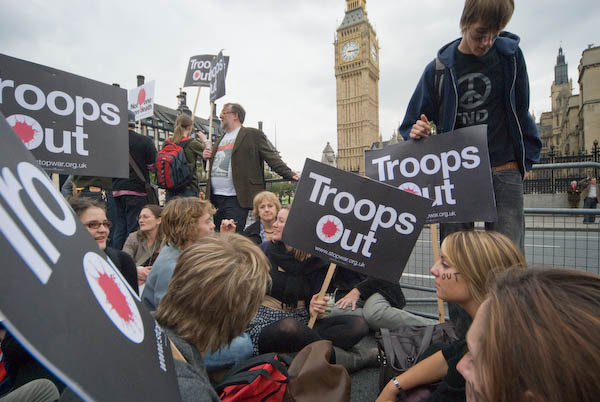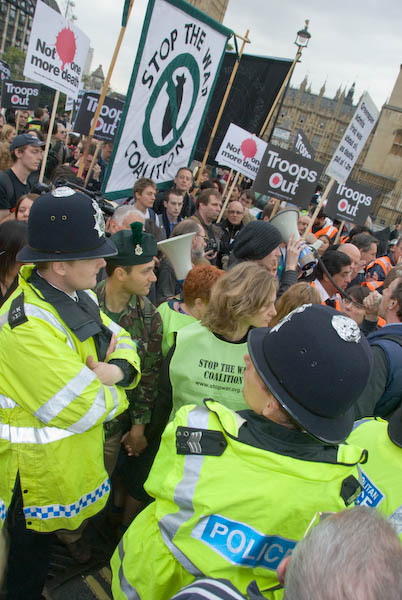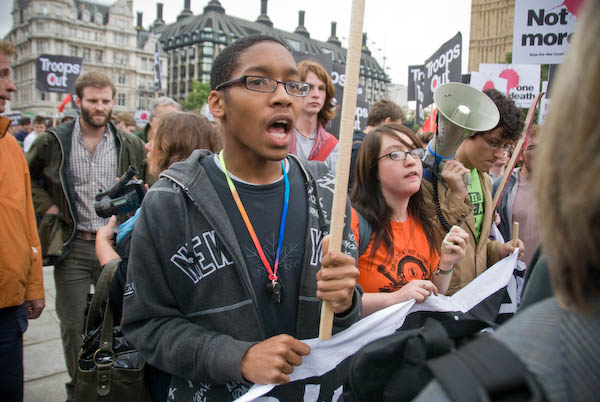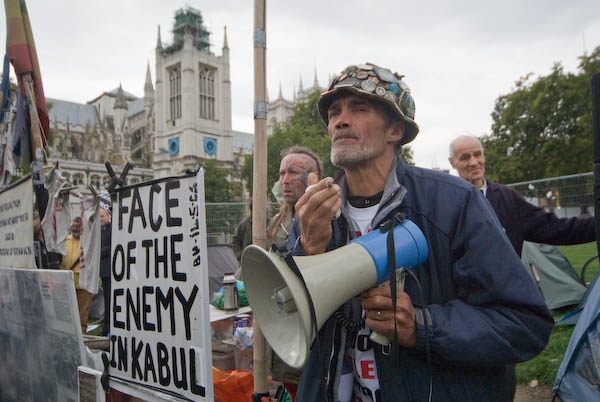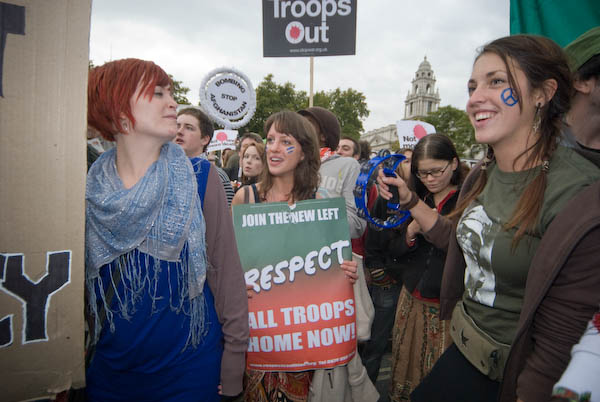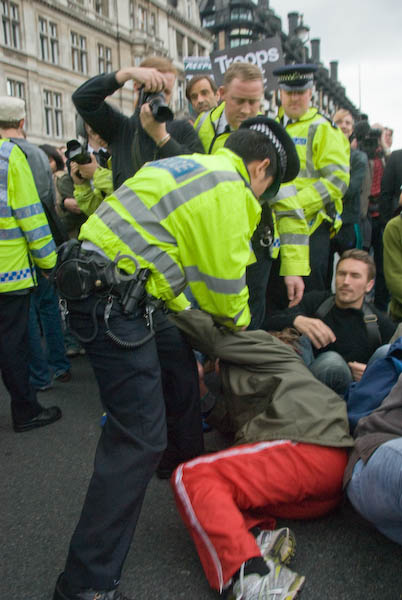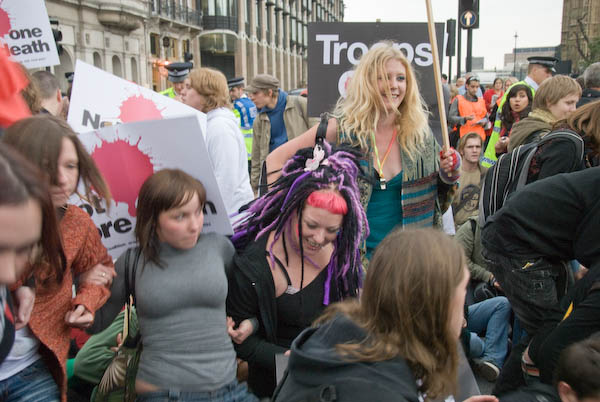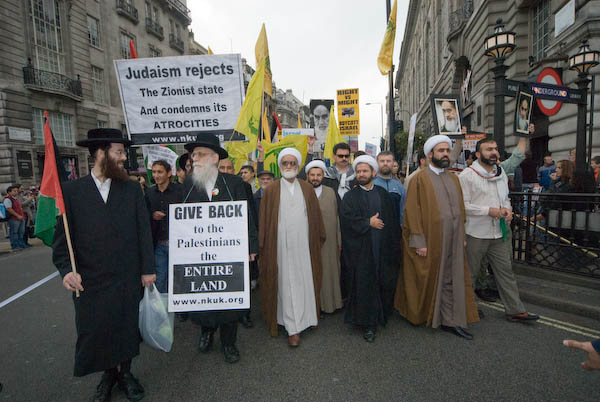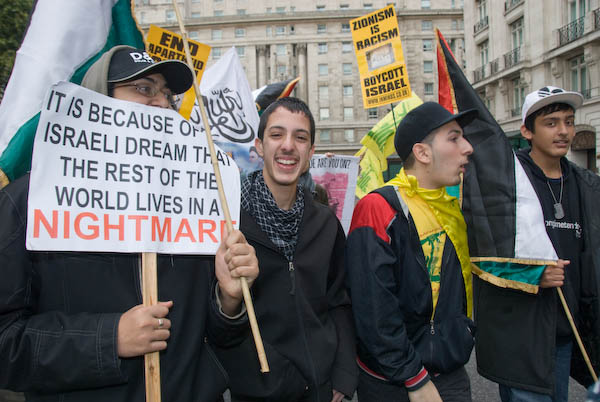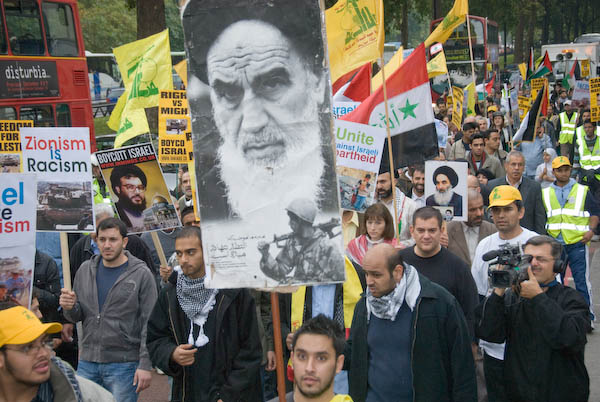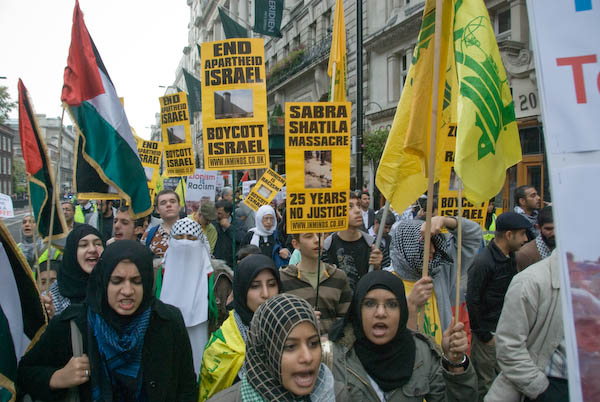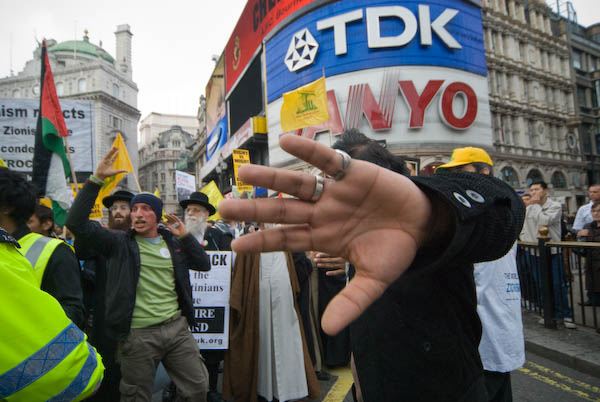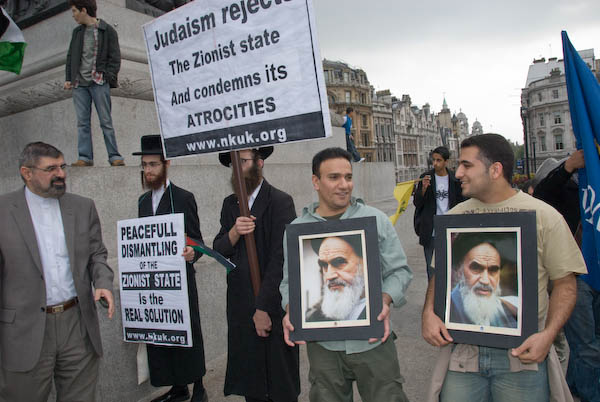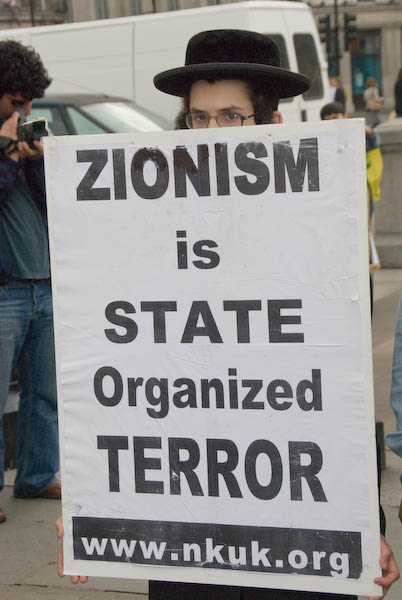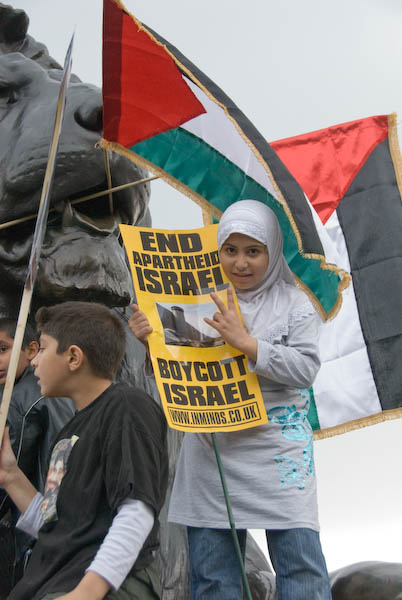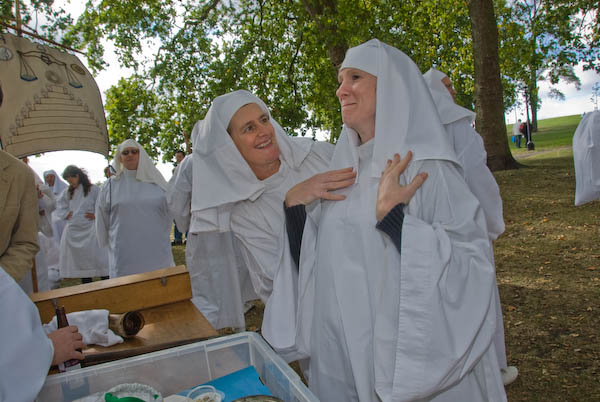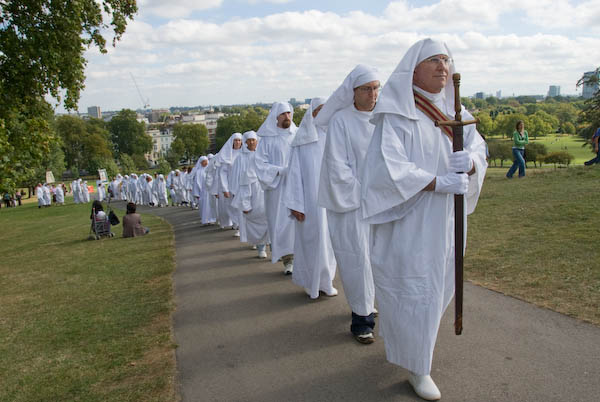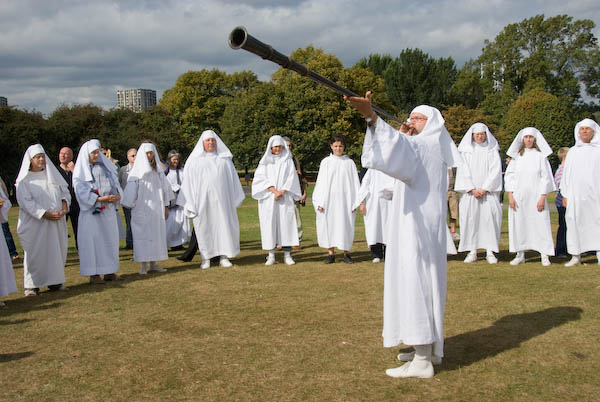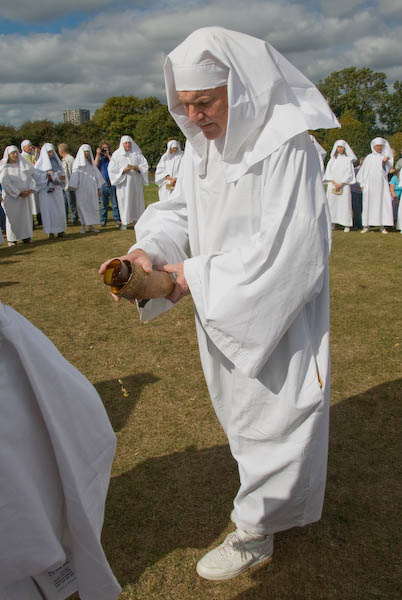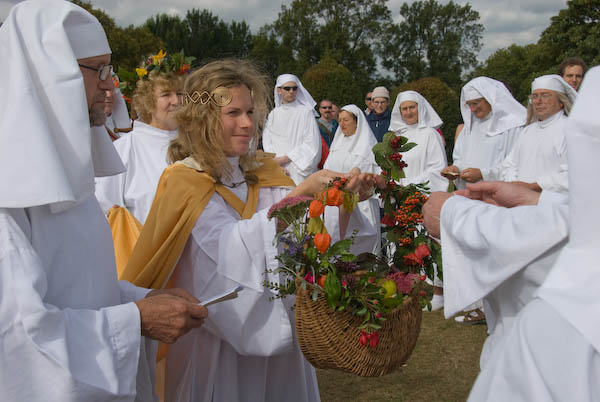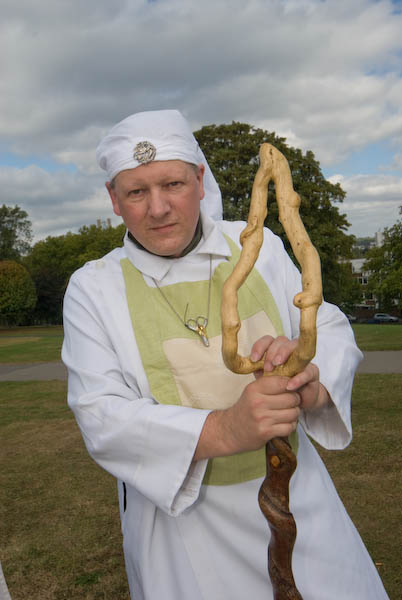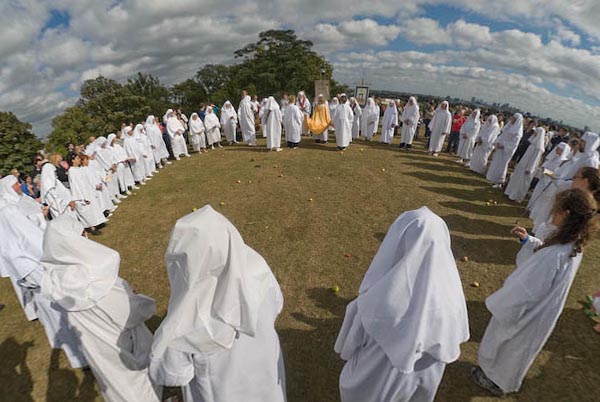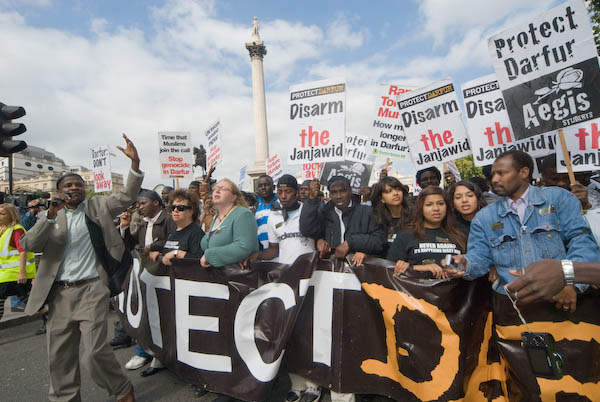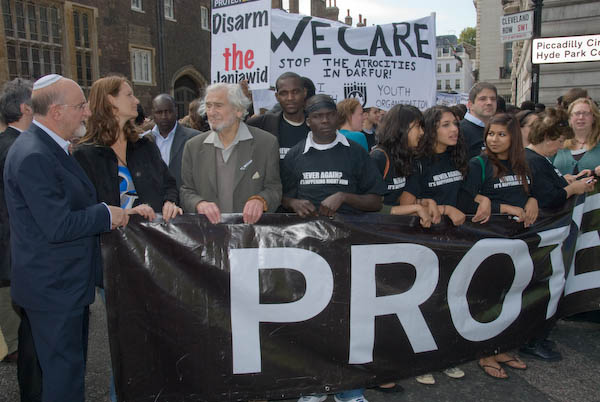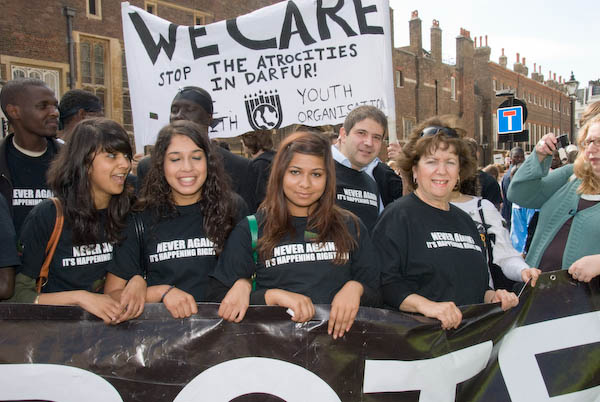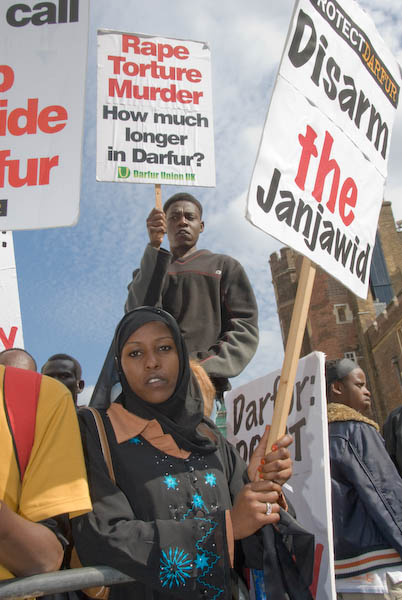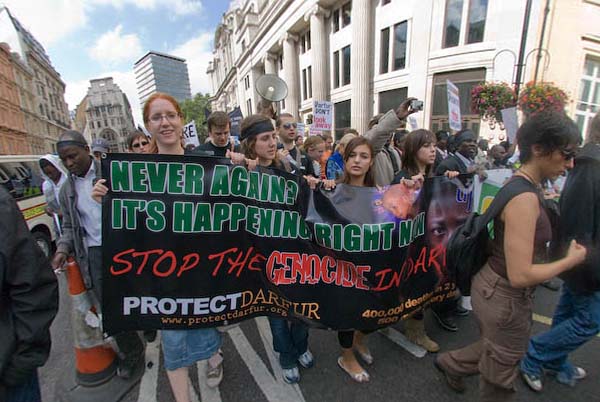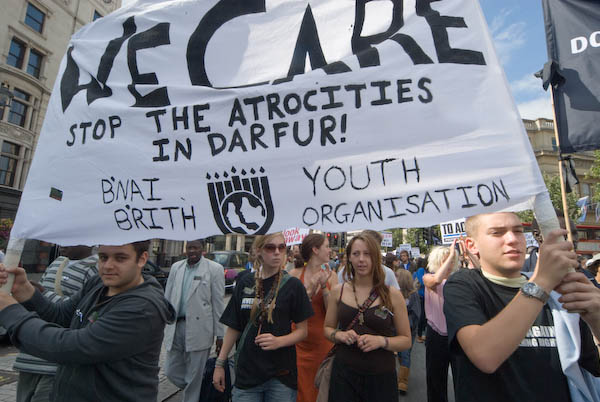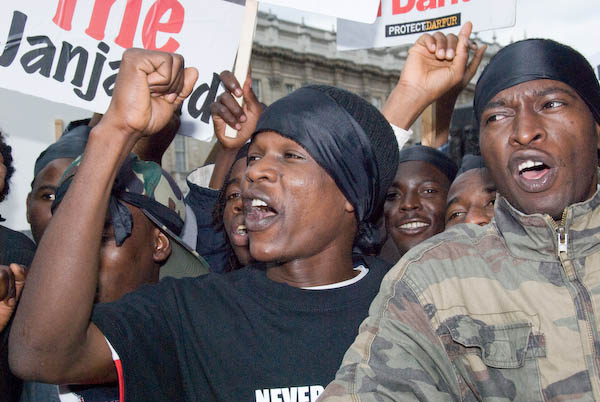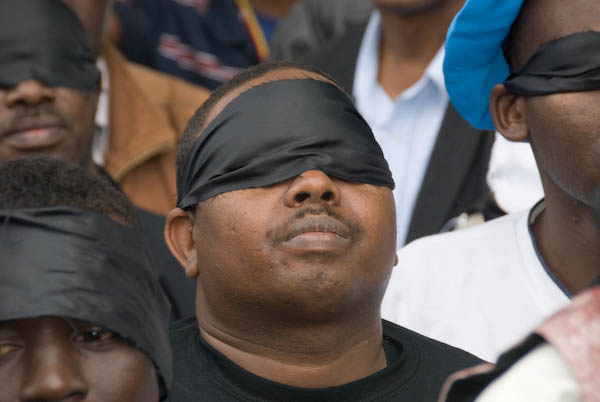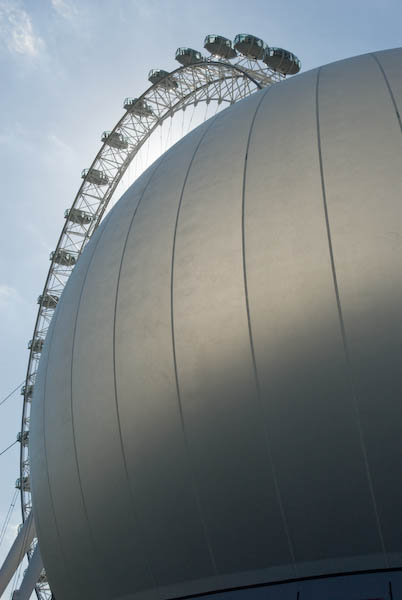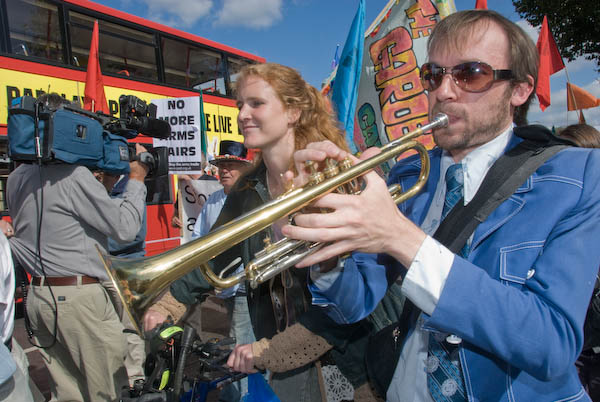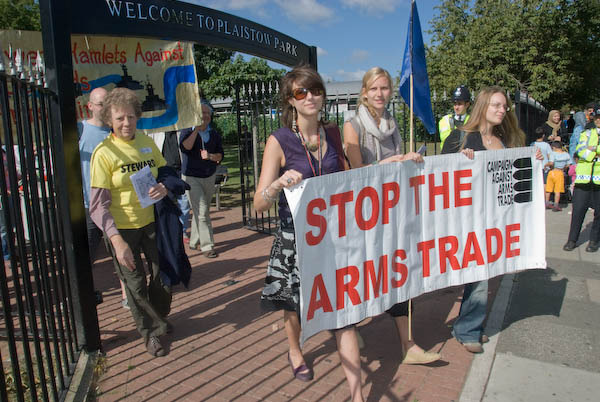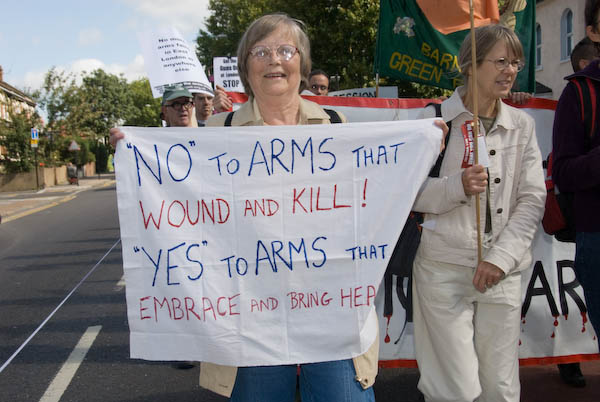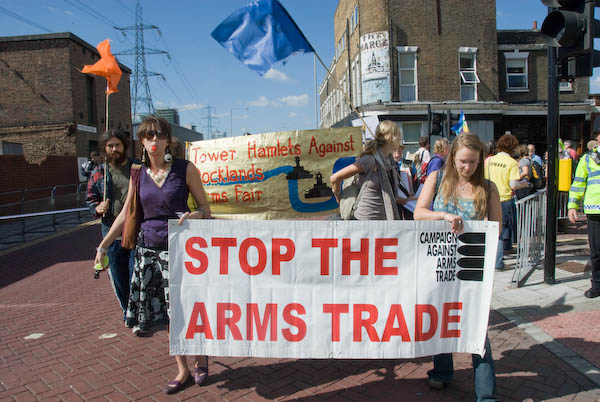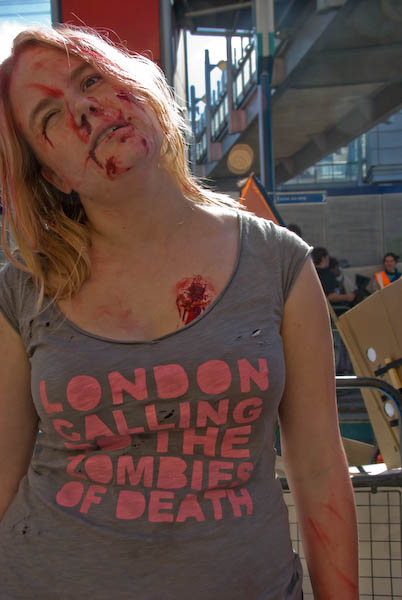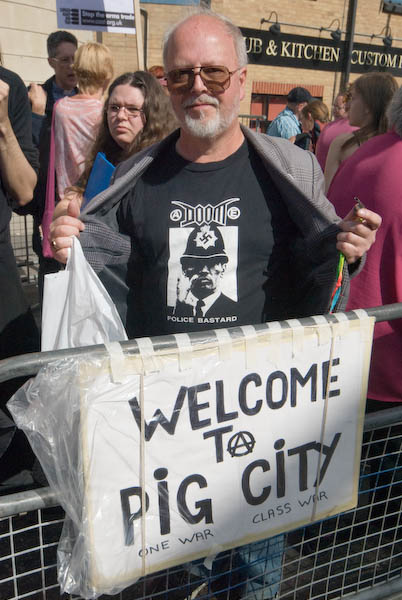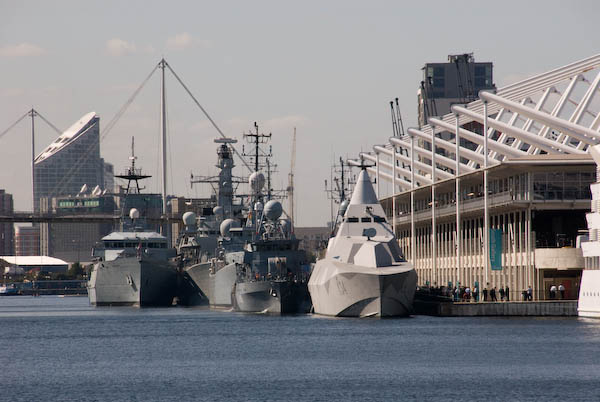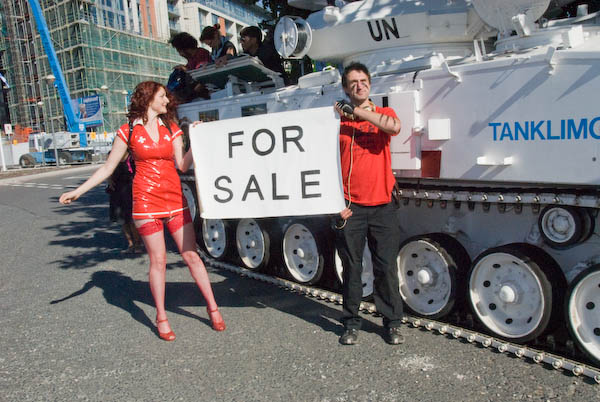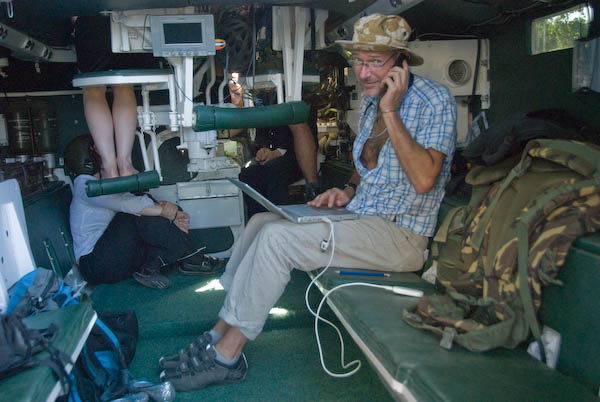Close Guantanamo 5th Anniversary Demonstration: A protest on Thursday 11th January 2007 outside the US Embassy in Grosvenor Square marked the 5th anniversary of the setting up of the illegal US prison camp at Guantanamo Bay where almost entirely innocent prisoners were held and tortured without trial for many years. Over the years around 780 men were brought to the prison and by 2025 almost all had been released without charge. Around nine have died there, most alleged to have committed suicide, but 15 are thought to still be held there at the end of 2025, largely because there is no country to which they can safely be released.

Every year from 2006 to 2019 I photographed protests against the camp, particularly on 11th January, but also on other occasions through the year, particularly covering the long-term campaigns for the release of those British prisoners held there. Protests here became less regular after the release of Shaker Aamer, the last British resident to be held there on 30 October 2015.

The protest I photographed on 11th January 2007 was the first I knew about on the actual anniversary of the establishment of the camp, and the pictures here and the text below are from that. Then we naively thought that the USA could sink no further, but current events are proving how wrong we were. As usual I’ve made some minor corrections to the text including restoring normal capitalisation and I’ll give a link to the original post were you can find more pictures
Close guantanamo 5th anniversary demonstration
Amnesty International: US Embassy, London. Thur 11 Jan, 2007
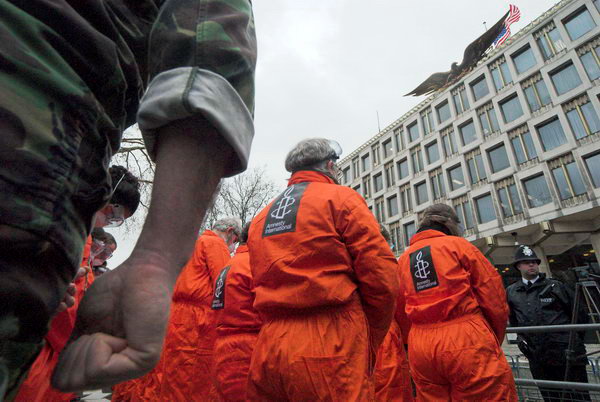
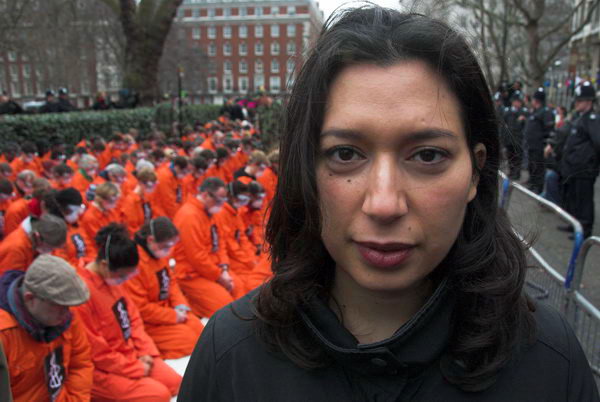
Orange seems to be a colour fatally linked to America’s disgrace in the modern world through human rights and related abuses. Agent Orange spread dioxin-related birth defects over the vast tracts of south-east Asia it was used to defoliate, and orange boiler-suits have become the symbol of the fatal American own goal in the fight for freedom, the illegal prison camp at Guantanamo Bay.
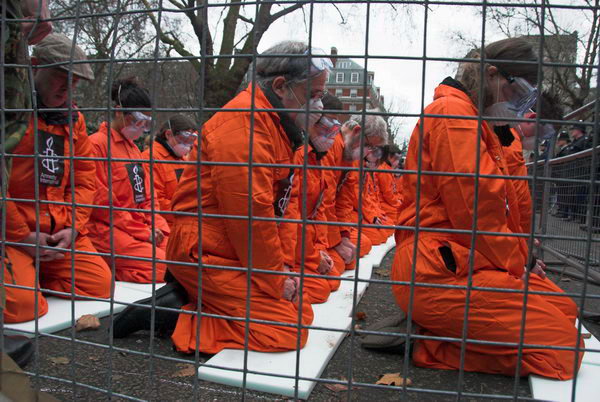
Amnesty International marked the fifth anniversary of this blot on the free world with a world-wide series of protests, in New York, Tokyo, Rome, Madrid, Tunis, Tel Aviv and London. I entered Grosvenor Square to see a long line of around three hundred people in orange boiler-suits spreading a quarter of the way around the large square. They were soon formed into groups and marched by those dressed as camp guards into a small pen in the road directly in front of the US Embassy.

In a re-creation of the Guantanamo Bay camp more or less on the embassy doorstep, the ‘guards’ patrolled, issuing arbitrary orders and generally abusing the prisoners, subjecting them to the infamous kneeling ‘submission posture’ with the occasional incident of casual ‘violence’ thrown in for greater authenticity. The hour-long vigil there ended with a display of defiance as the ‘prisoners’ joined together in clapping.
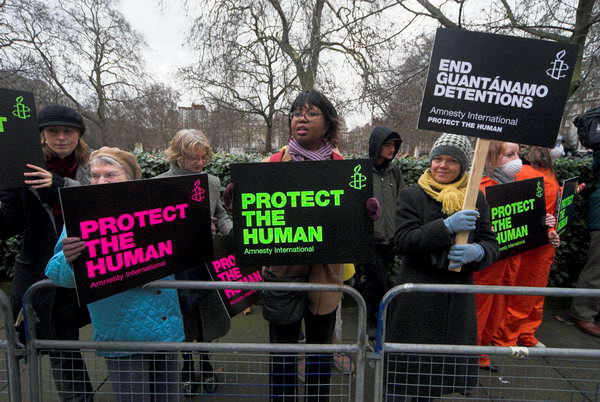
Other amnesty supporters held placards and banners calling for an end to the travesty of justice at Guantanamo Bay and other illegal detention centres and the illegal rendition of prisoners. They called for the release of all those held illegally, and in particular the British residents still in Guantanamo. These included Omar Deghayes, whose sister Amani Deghayes was present at the demonstrations. The lack of any effort by the UK government to press for the release of these British residents is a continuing and senseless disgrace.
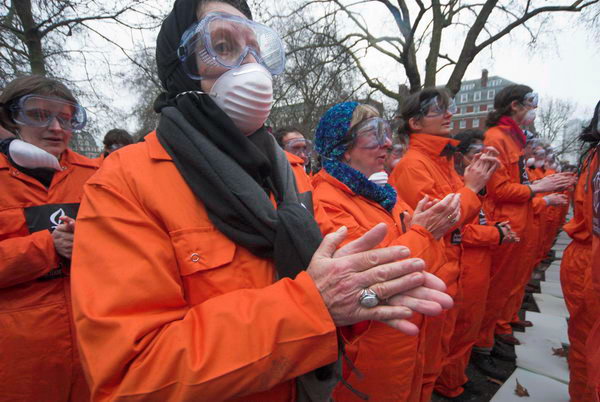
This was a high-profile media event, although I didn’t hear it mentioned on the BBC radio news later in the day, press and TV from London and abroad were covering it. Unlike some earlier events I’ve covered at the same location, the policing was a model of good practice, allowing the press to get on with the job, and proportionate to what was happening.
More pictures on My London Diary.
Flickr – Facebook – My London Diary – Hull Photos – Lea Valley – Paris
London’s Industrial Heritage – London Photos
All photographs on this page are copyright © Peter Marshall.
Contact me to buy prints or licence to reproduce.
